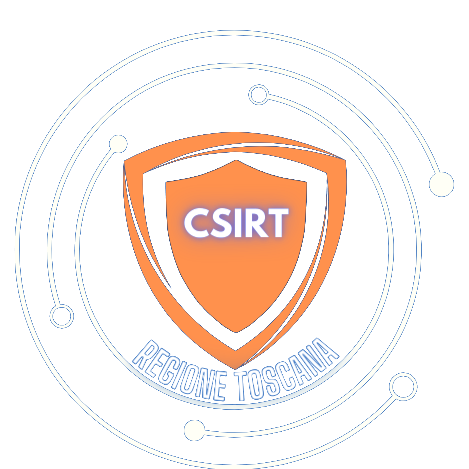Aggiornamenti Mensili Microsoft (AL01/250115/CSIRT-ITA)
Data:
27 Gennaio 2025
Impatto Sistemico
Critico (79.23)
Sintesi
Microsoft ha rilasciato gli aggiornamenti di sicurezza mensili che risolvono un totale di 159 nuove vulnerabilità, di cui 8 di tipo 0-day.
Note : un Proof of Concept (PoC) per lo sfruttamento della CVE-2025-21298 risulterebbe disponibile in rete.
Note: le CVE-2025-21333 , CVE-2025-21334 , CVE-2025-21335 risultano essere sfruttate attivamente in rete.
Note: dei Proof of Concept (PoC) per lo sfruttamento delle CVE-2025-21186 , CVE-2025-21275 , CVE-2025-21308 , CVE-2025-21366 , CVE-2025-21395 risulterebbero disponibili in rete.
Tipologia
- Remote Code Execution
- Security Feature Bypass
- Spoofing
- Elevation of Privilege
- Denial of Service
- Information Disclosure
Descrizione e potenziali impatti
Nel dettaglio, le vulnerabilità sfruttate attivamente in rete e/o per le quali risulta disponibile in rete anche un “proof of concept”, riguardano:
- Microsoft Access : identificate tramite le CVE-2025-21366 , CVE-2025-21395 e CVE-2025-21186 , di tipo ” Arbitrary Code Execution ” e con score CVSS v3 pari a 7.8. Tali vulnerabilità potrebbero essere sfruttate tramite la distribuzione di documenti opportunamente predisposti al fine di eseguire codice arbitrario sui dispositivi target.
- Windows Hyper-V : identificate tramite le CVE-2025-21333 , CVE-2025-21334 e CVE-2025-21335 , di tipo ” Elevation of Privilege ” e con score CVSS v3 pari a 7.8. Tali vulnerabilità risiedono nel servizio di integrazione del kernel NT (VSP) di Windows Hyper-V e potrebbe permettere l’ottenimento di privilegi di tipo SYSTEM sui dispositivi interessati tramite l’accesso non autorizzato a porzioni di memoria deallocate – use-after-free.
- Windows App Package Installer : identificata tramite la CVE-2025-21275 , di tipo ” Elevation of Privilege ” e con score CVSS v3 pari a 7.8. Tale vulnerabilità, qualora sfruttata, potrebbe permettere l’ottenimento di privilegi di tipo SYSTEM sui dispositivi interessati.
- Windows Themes : identificata tramite la CVE-2025-21308 , di tipo “Spoofing” e con score CVSS v3 pari a 6.5. Tale vulnerabilità potrebbe permettere ad un utente malevolo di distribuire documenti opportunamente predisposti tramite e-mail e/o messaggistica istantanea, esortando la vittima a manipolarli.
- NB: i sistemi con il protocollo NTLM disabilitato non risultano vulnerabili.
Prodotti e versioni affette:
- .NET, .NET Framework
- Active Directory Domain Services
- Active Directory Federation Services
- BranchCache
- IP Helper
- Hyper-V
- Line Printer Daemon Service (LPD)
- MapUrlToZone
- Microsoft Azure Gateway Manager
- Microsoft Brokering File System
- Microsoft Digest Authentication
- Microsoft Graphics Component
- Microsoft Office
- Microsoft Office Access
- Microsoft Office Excel
- Microsoft Office OneNote
- Microsoft Office Outlook
- Microsoft Office Outlook for Mac
- Microsoft Office SharePoint
- Microsoft Office Visio
- Microsoft Office Word
- Microsoft Teams
- Microsoft Windows Search Component
- Power Automate
- Reliable Multicast Transport Driver (RMCAST)
- Visual Studio
- Windows BitLocker
- Windows Boot Loader
- Windows Boot Manager
- Windows Client-Side Caching (CSC) Service
- Windows Cloud Files Mini Filter Driver
- Windows COM
- Windows Connected Devices Platform Service
- Windows Cryptographic Services
- Windows Digital Media
- Windows Direct Show
- Windows DWM Core Library
- Windows Event Tracing
- Windows Geolocation Service
- Windows Hello
- Windows Installer
- Windows Kerberos
- Windows Kernel Memory
- Windows Mark of the Web (MOTW)
- Windows Message Queuing
- Windows OLE
- Windows PrintWorkflowUserSvc
- Windows Recovery Environment Agent
- Windows Remote Desktop Services
- Windows Secure Boot
- Windows Smart Card
- Windows SmartScreen
- Windows SPNEGO Extended Negotiation
- Windows Telephony Service
- Windows Themes
- Windows UPnP Device Host
- Windows Virtual Trusted Platform Module
- Windows Virtualization-Based Security (VBS) Enclave
- Windows Web Threat Defense User Service
- Windows Win32K – GRFX
- Windows WLAN Auto Config Service
Azioni di mitigazione
In linea con le dichiarazioni del vendor, si raccomanda di procedere all’aggiornamento dei prodotti impattati attraverso l’apposita funzione di Windows Update.
Riferimenti
- https://msrc.microsoft.com/update-guide/releaseNote/2025-Jan
- https://msrc.microsoft.com/update-guide
CVE
Change log
| Versione | Note | Data |
|---|---|---|
| 1.0 | Pubblicato il 15-01-2025 | 15/01/2025 |
| 1.1 | Aggiunta nota per la CVE-2025-21298 alla sezione “Sintesi” | 27/01/2025 |
| 1.01 | https://msrc.microsoft.com/update-guide (NB: filtro: patch tuesday – January 2025) | 15/01/2025 |
Il presente articolo è un prodotto originale di csirt.gov.it, riproposto qui a solo scopo di aumentarne la visibilità. Può essere visualizzato in versione originale al seguente link
Ultimo aggiornamento
12 Maggio 2025, 12:30

 CSIRT Toscana
CSIRT Toscana